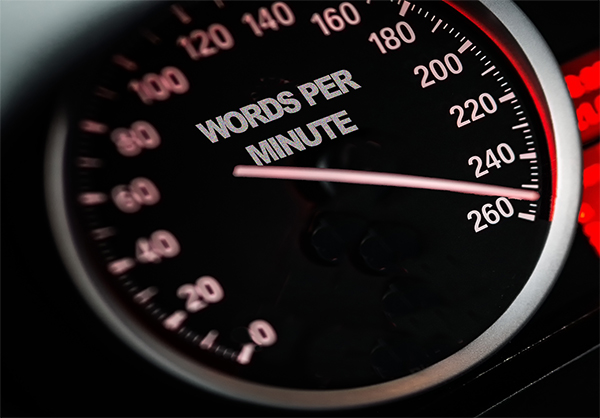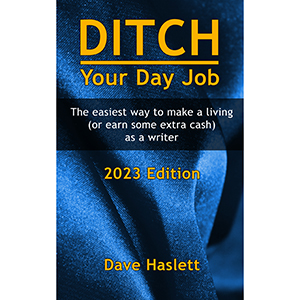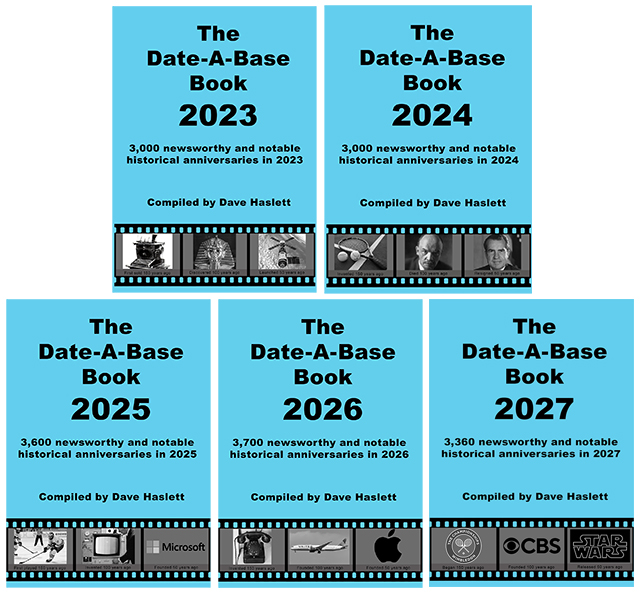
There’s a growing trend in today’s writing industry: write books faster.
Faster is better, they say. We’ll see why in a moment.
Writing books quickly doesn’t (necessarily) mean there’s any loss of quality. If anything, the quality of books is improving too. Many self-published books are as good as (or better than) traditionally published books these days.
I’m mainly talking about the writing and editing here. But other aspects, including the cover, blurb, and production can be just as good as books from the leading publishers.
We’ll look at how authors can produce perfect text (at no extra cost) in the next article.
So, why are authors writing faster?
In the case of fiction, series of novels sell far better than standalone novels. Self-published novelists generally make the first book in each series free (or very low cost – but free always works better). Hopefully, readers will love Book One and go on to buy Books Two, Three, Four, and so on.
The trouble is that even the slowest readers can read books faster than we can write them. If the next one isn’t available, and readers can’t even pre-order it, the plan fails.
If you manage to get the reader’s email address, you might entice them back when the next book is available. But otherwise, most readers will never return.
The Solution
The best solution is to write at least four or five books in the series before releasing the first one. Release the first one for free and release the second one at the same time. Make the third one available to pre-order, and release it thirty days after the first two. At the same same, make Book Four available to pre-order, and release that thirty days later.
By this point, your adoring readers will have fallen in love with your stories and characters. They’ll have happily signed up for your mailing list to get the bonuses you offered them. They’ll be willing to wait for the next book in the series – as long as you don’t take too long.
If you follow the rapid-release plan, the next book in your series should always be available to pre-order. Even if you haven’t started writing it yet. (Amazon gives you ninety days to upload the final version.)
What if it doesn’t make enough money?
Of course, there’s also a risk that your brilliant new series might flop completely. You don’t want to waste years of your life writing a series of novels that doesn’t sell. So, once again, faster is better. If you’ve spent four months writing four books, you won’t have wasted too much time. Write a different series instead.
(In a future article, we’ll see how to resurrect a failed series and give it a second shot at success.)
If you have a well-loved series, extending it is a reliable way of making a good living. By the time you release Book Five and beyond, you should know exactly how much money each book will earn.
If you can write books quickly, you could even launch a second series at the same time.
Amazon’s free marketing boost
Many self-published novelists release new books every thirty days because of how Amazon’s marketing works.
Amazon gives each new book a boost in its search results for the first thirty days. If it sells well, that boost will be extended. But if it doesn’t sell, it will drop down to page 30 (or thereabouts) and no one will ever see it.
If you release a new book every thirty days, you can take advantage of this ‘push’.
But that doesn’t just mean writing your book, of course. It also needs to be edited and proofread, and you’ll need a cover and a blurb. And everything will need to be finished and uploaded to Amazon within thirty days. It might sound like a lot of work, but it’s perfectly achievable.
So, how do you write books faster?
To release books this quickly, you need a detailed plan. Not just for each book, but for the whole series – or at least the first three or four books.
If you prefer to make up the story as you go along, this won’t work for you. There’s nothing wrong with writing that way; but you’ll be happier writing one book a year, not one a month. (That’s a different marketing plan that we’ll look at in a future article.)
Okay, back to the rapid-release plan.
● Before you start writing the first book, you’ll already know exactly what happens in every book in the series.
● You’ll have broken each book down into chapters and scenes.
● Bullet points will list every major plot point – and ideally for every minor one too.
● You’ll have a timeline for the series plot and sub-plots
● You’ll also have timelines for the plots and sub-plots in each book.
● Each character will have their own timeline. It will show which scenes they appear in and where they are at the time. It will also show their interactions and relationships with the other characters.
● You’ll know each character intimately. You’ll be able to picture them and hear how they speak. And you’ll know what they’ll do and say in any situation you put them in. Each character will be distinct – in their names, appearance, manner, speech patterns, behaviour, reactions, skill sets, and so on.
It’s all about the planning
Now, you might be thinking it will take you weeks or months to put all of this together. And, yes, it probably will. It’s a necessary part of writing a series on a rapid-release schedule – but it can be enormously enjoyable. You can have scenes that rely on something the characters did several books earlier. And you can have running jokes throughout the series
Software can help
There’s software that can help with the planning process.
● You could use a word processing document, with a page for each book, broken down into bullet points.
● Or you could use a dedicated outliner, such as Workflowy – which I often use to plan my non-fiction books.
● Scrivener works like a word processor, but it lists books, chapters and scenes down the side of the screen. You can drag things around if they would work better in a different order. It also has a corkboard so you can see everything visually.
● Plottr shows your project as a timeline, with the main plot, sub-plots, chapters, scenes and characters all clearly displayed. It also has built-in plot templates and scene templates to help you plan your story.
● And there are several others, depending on what help you need. We’ll look at these in a future article.
Other people can help too
Writing, editing, proofreading, cover design, writing the blurb, marketing… It can be tricky if you only have thirty days for each book. But if you can persuade other people to help you (ideally for free) you can concentrate on the writing. We’ll look at some ways of doing this in future articles (starting with the next one!)
Going further
Now, obviously there’s a lot more to writing a great series than this.
● You need ideas – and lots of them – and they need to be brilliant.
● Then you need to evaluate them, ditch the bad ones, and expand the best ones.
● You need to know what to research (and what not to). And you need to fill any gaps in your knowledge as quickly as possible.
● You need to find enough time to write all of these books – without giving up your whole life.
● And you need to keep yourself motivated. This can be particularly tricky when you’re writing Book Four, but Book One hasn’t even been published yet. (Especially if you’ve decided you hate the covers. And the titles. And you don’t know if anyone will be interested in the series anyway.)
The benefits
You’ll get an immense feeling of satisfaction from writing and publishing a series that does well. It can make you a decent amount of money too. Readers will tell you how much your stories and characters mean to them. They’ll recommend your books to other people.. They’ll send you drawings of what they think your characters look like. They’ll suggest plots, scenes, characters and jokes you could use. It can be a joyful experience.
(We’ll look at some great ways to connect with your readers in another article.)
Take the next step…
Obviously, I can’t tell you everything you need to know in a short article like this. It would take a whole book. But, good news, I’ve already written it. Check out The Fastest Way to Write Your Book. (And you might also like the follow-up The Fastest Ways to Edit, Publish and Sell Your Book.)
If you need ideas, you’ll find thousands of them, including unique, ready-made storylines, in the ideas4writers ideas collection. The 35 volumes cover everything from plot, characters, settings and dialogue to specific genres like romance, science fiction, thrillers, mystery, comedy, and more.


